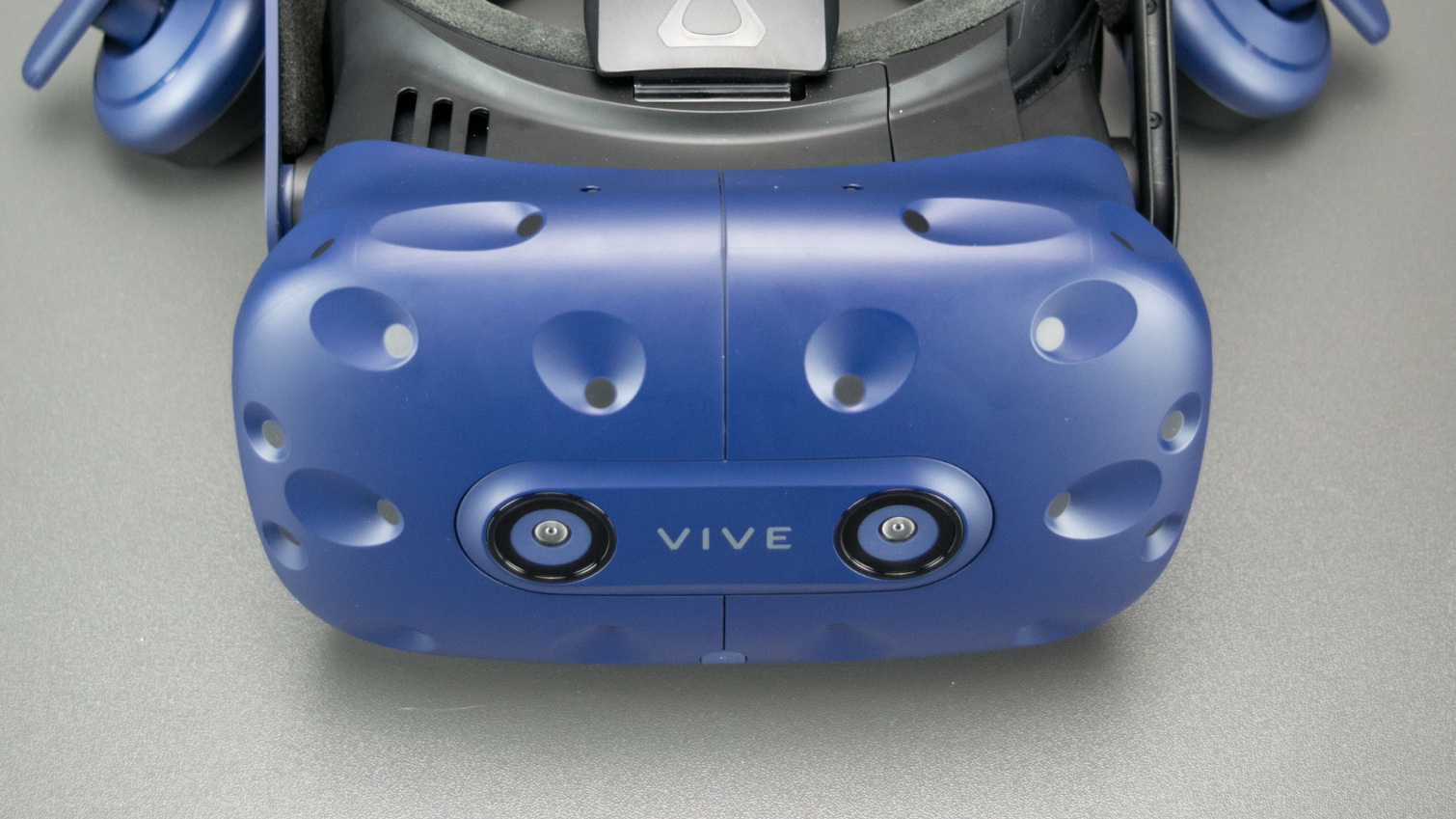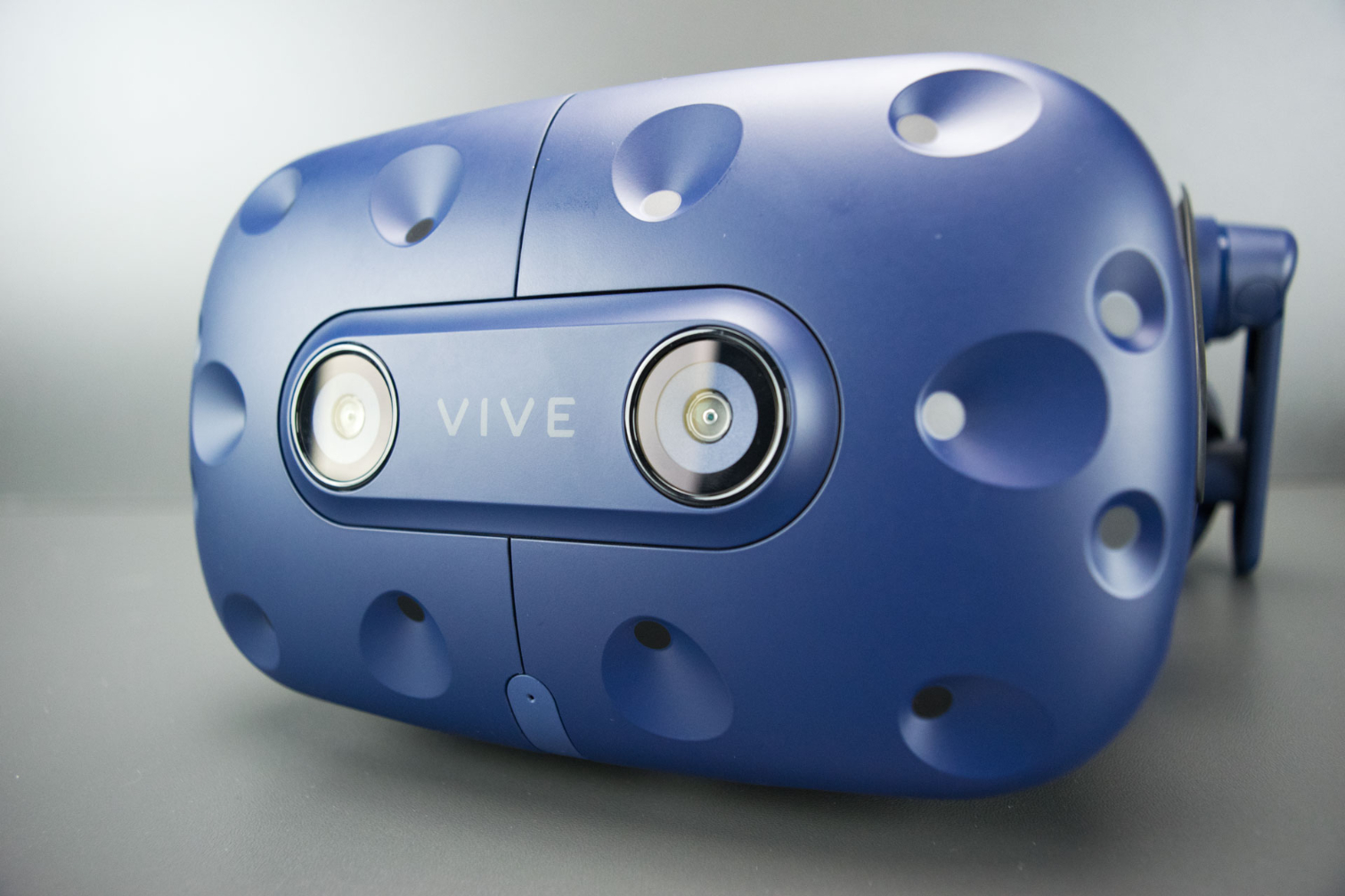HTC Vive Pro Headset Review: A High Bar for Premium VR
Why you can trust Tom's Hardware
The HTC Vive Pro: Final Thoughts
With the Vive Pro, HTC set the bar for the next generation of VR devices—and it set the bar high. It’s clear that HTC is rapidly learning what makes a good VR headset.
The new displays are an excellent improvement over the first-generation HMD’s displays. But to say that the Vive Pro is just a higher-resolution Vive would be a major understatement. We believe the new design features that HTC introduced with the Vive Pro will have more of an impact than many people probably expect. The display resolution is almost secondary when you look at the larger picture.
When you ask people what they think it will take for mass adoption of VR hardware happen, many people will tell you that it comes down to price. VR headsets must have affordable price tags before the majority takes an interest. We don’t disagree with that assessment. There are only so many people who are willing to pay a large premium to play at the cutting edge of modern consumer tech. But before the price really matters, the hardware needs to be "good enough" for everyone--not just enthusiasts.
We would argue that for VR HMDs to be good enough to meet everyone’s expectations, they must be comfortable first. Screen resolutions and refresh rates are going up. We don’t have to guess about that; we know it’s happening. Everyone in the industry understands that displays need to get better, and many companies are working on that problem right now. But what do you think people are going to complain about next, when the screen-door effect and graphics aliasing in VR are a thing of the past? Fit and comfort, that’s what.
Microsoft is trying to sell the Windows Mixed Reality platform as a productivity medium, as well as an entertainment medium. But that will never happen with the current crop of Windows MR HMDs, because Microsoft’s hardware partners went after the budget segment of the VR market and didn’t put much effort into improving comfort. The Windows MR headsets that we’ve tried (including the more premium Samsung Odyssey) aren’t comfortable enough to wear for hours at a time, which makes them irrelevant for productivity use. However, we could imagine wearing the Vive Pro every day for hours at a stretch. We’re not saying HTC’s current execution with the Vive Pro is perfect, but it’s a big step in the right (comfortable) direction.
HTC is getting ahead of the curve and setting an example for every other company in the VR hardware market. If you’re in the business of building VR HMDs, consider the Vive Pro a template for where things need to go. Price, of course, must come down in time, but the consumer VR market is still too immature for most people anyway. It would be best to perfect the techniques to build a quality device before you focus on commoditizing the hardware.
Contrary to many arguments, we’re of the belief that expensive hardware does not hurt the growth of the VR industry. In these early years, we would rather see advancements in every aspect of VR hardware before the dramatic price drops become the norm.
Get Tom's Hardware's best news and in-depth reviews, straight to your inbox.
Bottom Line
HTC showed that it’s not afraid to pursue the pinnacle of high-end VR with the Vive Pro. The headset is still far from perfect, but it’s the closest thing that we have to it today, and it's a whole lot better than the best consumer VR system you could buy before.
Likely until the Pimax 8K hits the market later this year, HTC’s Vive Pro will offer the best visual experience that you can find a VR headset. It’s at least on par with the Samsung Odyssey headset, but with SteamVR’s bias towards the Vive Pro, it gets a higher input resolution out of the box, with more stable performance. That comes at the cost of higher GPU requirements (particularly if you're looking to maximize game settings). But if you’re looking for the best VR experience possible, you’re probably already rocking a recent high-end graphics card.
If you have an original HTC Vive and are happy with it, there's certainly no dire need to upgrade--especially if you have more-important things to spend $800 on. That said, no other VR headset comes close to the Vive Pro when you compare comfort. HTC's new headset is the most comfortable HMD that we’ve worn, period.
We're anxiously anticipating the headset that dethrones the Vive Pro, because it will have to be great. But for the time being, HTC gets our stamp of approval--at least for anyone who can afford it.
MORE: Best Virtual Reality Headsets
MORE: All Virtual Reality Content
MORE: Virtual Reality Basics
Current page: The HTC Vive Pro: Final Thoughts
Prev Page HTC Vive Pro Performance AnalysisKevin Carbotte is a contributing writer for Tom's Hardware who primarily covers VR and AR hardware. He has been writing for us for more than four years.
-
ingtar33 well glad the screen door effect is discussed, somehow that's left out of many of these VR display discussions, as anyone who's actually used one for 5 minutes will tell you it's the biggest problem you'll face in VR for the most part.Reply
Good news on the design improvements and resolution improvement. Shame that god rays are still an issue. Seems like we're still a generation or two on this tech before it becomes something viable for the mainstream. -
jfkeenan There are several VR solutions available at a variety of price points. I wish people would stop complaining that HTC is offering a premium product. When I learned the news of the pre-order I was like, "Shut up and take my money!" I just got my tax return so this was a no brainer for me. Like Kevin said, if you can't afford a Mercedes don't be mad at them for making luxury cars.Reply -
kcarbotte Reply20852498 said:well glad the screen door effect is discussed, somehow that's left out of many of these VR display discussions, as anyone who's actually used one for 5 minutes will tell you it's the biggest problem you'll face in VR for the most part.
Good news on the design improvements and resolution improvement. Shame that god rays are still an issue. Seems like we're still a generation or two on this tech before it becomes something viable for the mainstream.
It's really not a big problem unless you're trying to do things that require reading text.
As someone who's put hundreds of hours in with the Vive, I can honestly say that screen door effect is not a real problem. It's just something that people like to complain about to give them justification not to adopt VR.
I won't deny that it exists. But I don't buy for a second that it's a real hindrance.
That said, if that's the biggest problem that you perceive, then VR is doing pretty good, I'd say. -
FreyjasChosen I'm with you, JFKEENAN. I pre-ordered the day it was available. I even bought the original HTC Vive because I needed the base stations and controllers (before the bundle was announced).Reply
I see a lot of complaints about the price tag of the Vive Pro, but no one's forcing anyone to buy it. I'm happy to pay for the best available product on the market. -
Giroro If HTC wants to charge a premium, then the device has to BE premium. There is a definite difference between "legitimately expensive" and "overpriced".Reply
At the end of the day, the Vive pro is still a tethered plastic headset that uses an inferior Samsung pentile display (forcing your system to waste 30% of its resources rendering subpixels that don't actually exists). Is the design a little better thought-out? sure.. that's how product iteration works. You change the design over time to improve quality and to decrease cost. What has HTC actually done here to justify the fact that they've more than doubled their asking price?
At the end of the day, nobody is going to pay "Lamborghini" prices for a Nissan Leaf E; not even one with particularly nice paint comfortable seats.
Of course, that's not a perfect analogy, because a used Nissan leaf is probably less expensive than a Vive Pro if you add in a computer powerful enough to deliver 90fps to such an impractical display. -
uglyduckling81 Kcarbotte can I ask which titles you have put the most time into?Reply
I've had a vive since launch but have used it less than 30 hours. I haven't found a game to put a lot of hours into. -
rhysiam The issue with your luxury car analogy is that in the case of VR, the product needs a vibrant software market to really succeed long term. When you buy a luxury car you're able to use a well-established road system that's developed over many years. That's not the case with VR. We have a classic chicken-and-egg situation where software developers are understandably nervous about investing heavily in VR experiences because the price of entry for VR results in a tiny potential market for their VR game/experience, while on the flip side, sales of headsets are being impacted by the limited games and experiences on offer. Lower headset sales means poorer economies of scale and higher per-headset prices to recoup the huge R&D investments, which just exacerbates the issue.Reply
Those of us (myself included) who really want VR to thrive long term do IMHO have some cause for concern with products like the Vive Pro that reinforce the fringe nature of VR and don't do a lot to entice the all-important software developers into the ecosystem.
Another threat to VR, and perhaps a bigger threat at that, is race-to-the-bottom headsets which compromise the experience. I know several people who have tried cheap, flawed VR experiences and written off VR as a whole. At least Vive is clearly marketing - and making strides to provide - a genuinely good VR experience.
I'm genuinely hoping for the day when I can pop on a wireless headset with 4K (or more) per eye and well-implemented foveated rendering and explore foreign worlds with interesting characters and complex stories. That's a platform that I would be more than willing to pay a lot of money to get access to. But getting there will require significant investment both on the hardware and software side. The Vive Pro headset is absolutely a step in the right direction from a technical hardware perspective, but is an (effectively) $1100 product right for the VR industry as a whole in the long term? I'm not so sure. -
uglyduckling81 I would say yes.Reply
Like you said a bad VR experience is horrendous and immediately turns you away.
When I got the Vive I only had a GTX 970 and it made me very sick every time I tried to use it. I was on the verge of selling it and putting VR into the non compatible with me section.
I took a different approach and upgraded to a GTX 1080 and haven't gotten sick since.
Turns out my hopeless travel sickness body is extremely susceptible to any frame time issues and the extra GPU horsepower did the trick. -
Ionlydothis The problem isn't that about offering a premium product. It's just that the Vive Pro IS NOT premium. It's exploitative. Minor improvements for a huge mark up but still the same critical flaws? Yeah, no thanks!Reply -
svx94 You can position yourself like Rolex or Mercedes of luxury market, they are built for "EXCLUSIVENESS"... that magic word won't do you any good in gaming market.Reply

